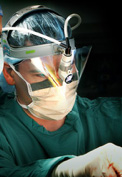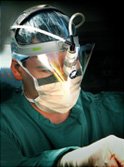Shoulder Arthritis
Normal Shoulder

In the normal shoulder (glenohumeral joint), motion occurs across smooth surfaces lined with cartilage. As seen on the X-ray to the right, the normal shoulder has smooth surfaces lined with cartilage that cushions the impact between the bones and provides a smooth gliding surface for movement.

The smooth cartilage surfaces of a normal shoulder can be seen clearly on the arthroscopic picture seen on the left.
Arthritic Shoulder
Arthritis of the shoulder develops as cartilage is broken down. This results in a loss of the smooth surfaces of the joint. The joint space seen on X-ray decreases until bone is moving on bone. Bone spurs may develop during this process. The irregular surfaces of an arthritic shoulder can be seen clearly on the arthroscopic picture seen on the right.
Symptoms


As shoulder arthritis develops, patients experience pain that gets worse with time, increases with activity, and interferes with sleep. Range of motion decreases, and atrophy (wasting) of the muscles around the shoulder worsens. The shoulder may swell, click, pop, and crunch. It may be tender to touch. Activities of daily living begin to become affected, as patients have difficulty with dressing, grooming, bathing, and even eating.
Non-Operative Treatment
Typically, non-operative treatments are used initially, including activity modification, anti-inflammatory medication, cortisone injections, and sometimes physical therapy. The goal of physical therapy is to attempt to maintain range of motion. Strengthening exercise can be painful.
Operative Treatment

Patients with shoulder arthritis have two surgical options: arthroscopic debridement or shoulder replacement. Arthroscopic surgery does not reverse the arthritic process, but often has the ability to provide pain relief for a period of time. Shoulder replacement surgery is the most reliable surgery for improving pain and return of function for the arthritic shoulder.





